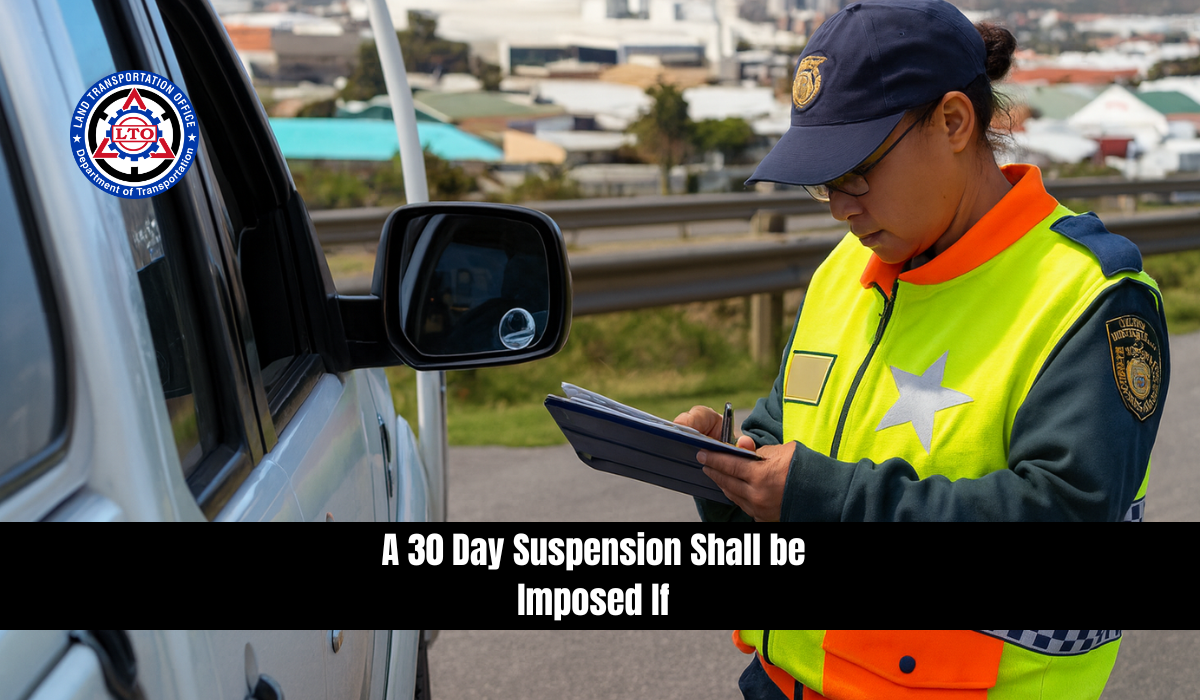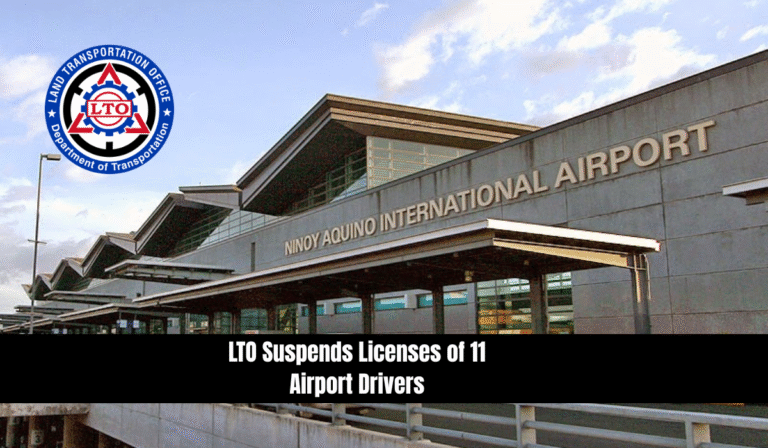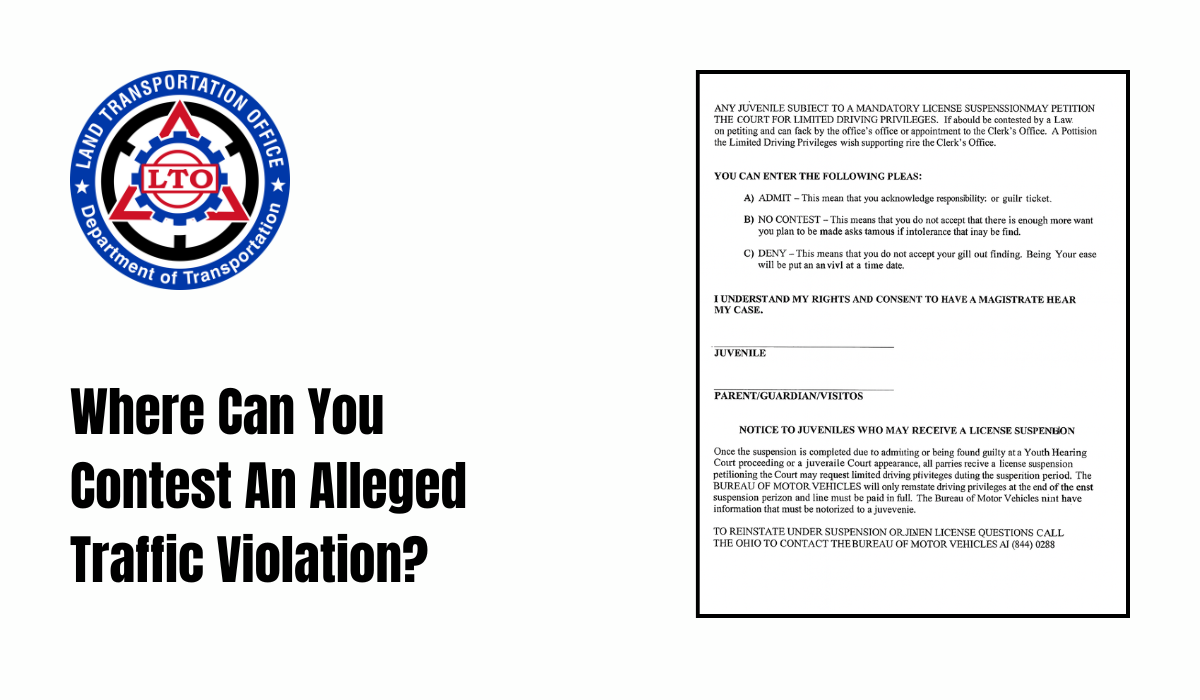A 30 Day Suspension Shall be Imposed If – A 30-day Suspension of Driver’s License Shall be Imposed if

A 30 Day Suspension Shall be Imposed If. It is the responsibility of the Land Transportation Office (LTO) to impose a 30-day suspension of a driver’s license if a driver is found with violations grave enough to warrant a temporary suspension of his driving privileges. Despite the fact that it is not always the first line of punishment, some drivers should be punished by some time away from the road.
As an agency responsible for enforcing rules and regulations on the Philippine public roads and developing policies designed to reduce road risks and dangers, the LTO fulfills its mandate by monitoring the Philippines’ public roads and enacting policies to reduce road hazards. There is no guarantee that a traffic violation will result in suspension of a driver’s license, however, according to the gravity of the offense, a driver’s license may be suspended or temporarily seized in the event of a traffic violation.
What does the Suspension of Driver’s License mean
LTO driver’s license suspension in the Philippines refers to the temporary seizure of a driver’s license card issued as proof of roadworthiness. There are various reasons why this is imposed as a penalty. There may be a difference in the suspension period and the appeal procedure depending on the type of violation, the type of driver’s license classification (student permit, professional, or non-professional), and the severity of the violation. However, under all circumstances, the driver has the right to appeal the suspension of their driver’s license or to appeal their license suspension’s validity.
Why a 30-Day Suspension May Be Imposed
The 30-day suspension of a driver’s license is enforced primarily to discipline drivers and ensure road safety. Below are the key reasons this suspension can be applied:
1. Failure to Pay Penalties Within 15 Days
According to the LTO portal, a 30-day suspension is automatically triggered if a driver does not pay the traffic violation penalty within 15 calendar days from the date of apprehension. This rule is non-negotiable and is designed to encourage prompt compliance.
2. Grave Traffic Violations
Not all violations are treated equally. Minor offenses like parking violations may not result in suspension. However, serious traffic violations such as reckless driving, overspeeding, and driving under the influence can immediately lead to a 30-day driver’s license suspension.
3. Repeat Offenders
Motorists who are habitual violators i.e., those with multiple unpaid fines or repeated violations are more likely to face not only suspensions but potentially license revocation in extreme cases.
Authority to Suspend and Entertain Appeals on Driver’s License
The Land Transport Office, as the primary enforcement agency for land transport and regulation, has the exclusive authority to revoke or suspend a license. By virtue of R.A.4136, another name for the Land Transportation and Traffic Code, the Commissioner of the Land Transportation and Traffic Agency is not only entitled to issue licenses, but also to revoke licenses of drivers found in violation of traffic rules and regulations. A license suspension may also be delegated to a deputy of the LTO, as long as the suspension does not exceed three (3) months. It is important to note, however, that if the driver violated any provision of RA 4136, the Commissioner or the municipal ordinances pertaining to traffic rules and regulations may also impose a suspension at least three times during a year for up to two years.
Licensing suspensions imposed by any LTO deputy can also be appealed to the Commissioner of LTO, who can modify, reverse, or confirm the suspension. When a license is revoked or refused reinstatement by the LTO Commissioner, the affected individual may appeal directly to the Secretary of Public Works and Communications to reverse that decision.
Common Reasons for License Suspension in the Philippines
In order to avoid the hassles associated with getting one’s driver’s license suspended and appealing to have it reversed, one needs to be familiar with the reasons that are causing driver license suspensions in the Philippines.
Following is a list of the most common reasons why you may be issued a suspended driver’s license in the Philippines.
Point Accumulation
The accumulation of points is one of the most common reasons for license suspension. In this situation, a license holder reaches a certain number of demerit points within a given period of time due to the number of major and minor traffic violations that have been committed by the licensee. In most cases, it results from violations, but speeding is among the most common violations that drivers struggle with.
In the event that you are a license holder and you continue to violate the same rules, or if you violate a certain rule along with others, this may eventually result in the accumulation of demerit points and potential suspension of your license. Naturally, the length of any license suspension that you may face will depend on the number of points that you have accrued as a license holder.
Consequently, knowing and adhering to the traffic rules and regulations in the Philippines is essential, especially if you do not wish to have your license suspended.
Habitual Offense/Repeat Violations
There is also the habitual violation of traffic rules and regulations as another common reason for the suspension of a driver’s license. As a licensed driver, if you repeatedly commit an offense within a set period of time, regardless if it’s deliberate or not, you will probably have to experience the suspension of your license within that time period.
As an example of a violation that is committed repeatedly by a number of licensees, reckless driving may be mentioned. A common LTO violation, reckless driving refers to driving beyond the speed limit without regard for safety or road conditions. Reckless driving is punished as follows:
- P 2,000.00 as a first offense
- P3,000.00 fine and three-month suspension of driver’s license for the second offense.
- P 10,000.00 for a third or subsequent offense. A driver’s license suspension for six (6) months shall be imposed for the third offense starting from the date of the payment of the fine.
Another type of violation that license holders are generally found to commit repeatedly is the violation of the Seat Belt Use Act. The law requires both drivers and passengers to wear seat belts, and children below the age of six (6) are not permitted to sit in the passenger seat. In spite of this, it is unfortunate that not many people feel they have a duty to comply with this law, resulting in multiple instances of the same violation. While the first two instances of offense will only result in an imposition of a fine, the third offense will result in the suspension of the driver’s license for one (1) week, counting from the date that the fine was paid to the LTO.
Automatic Suspensions
A driver’s license suspension may be applied automatically and immediately in certain circumstances, otherwise known as automatic suspension, in addition to violations. A number of reasons contribute to this conclusion, including:
Failure to pay within 15 days
As described in the LTO’s Joint Administrative Order (JAI) no. 2014-01, drivers who fail to pay the corresponding LTO violation fee within 15 days following their apprehension would have their license automatically suspended. As a result of the same law, a person whose license has been suspended and caught driving is guilty of the offense of “driving without a license,” which carries the same set of consequences.
The offense is punishable by a fine of P 3,000.00, as well as the further penalty of being disqualified from operating a motor vehicle for a period of one year from the date of payment of the imposed fine. It is recommended not to drive until you are given your license back if your license is suspended. Driving while your license is suspended also carries a certain punishment, termed “driving without a license.”.
Driving under the influence (DUI)
There are also some serious traffic violations that warrant the suspension of a driver’s license on an immediate basis. The following are some examples:
- Homicide
- Vehicular manslaughter and
- Drinking or driving under the influence of dangerous drugs or alcohol
- Evading police checkpoints may result in the automatic suspension or revocation of a driver’s license.
DUI, in particular, is extremely common, despite its dangers. Furthermore, a driver’s license may be suspended if they are in control of the vehicle when they are not in their best state due to alcohol consumption.
Suspension of a driver’s license does not preclude the filing of appropriate criminal charges against traffic violators. A suspension of twelve (12) months may be imposed upon non-professional operators who drive under the influence of alcohol or dangerous drugs; when proven guilty by a court of competent jurisdiction, the suspension will last for twelve (12) months for the first conviction. The second conviction would result in the irrevocable revocation of the driver’s license.
LTO Records that do not reflect actual individual information
If the driver’s license holder’s driving record does not match the actual driver’s personal information, then the license may also be suspended for having an inaccurate record. Section 25 of RA 4136 provides that driver records should contain the following accurate information:
- Address of the driver;
- Employer’s name and address;
- Number of the motor vehicle that a professional driver license holder is authorized to operate;
- There may also be other information that the LTO Commissioner needs.
Unauthorized to operate the subject vehicle
It is also stated in section 27 of RA 4136 that a LTO driver’s license may also be suspended where it is believed by the LTO Commissioner that the holder of that professional driver’s license is not the person who is authorized to operate the subject motor vehicle subject to the suspension. When a licensee operates a vehicle that is not authorized according to the classification of license granted to him/her, a fine of two hundred pesos will be imposed and the license will be suspended for three months on the first conviction; on the third conviction, the fine will be three hundred pesos, accompanied by a six-month jail sentence and a permanent revocation of the driver’s license.
Further, the fact that the vehicle is being operated or used as an accessory in the commission of a crime may also be grounds for suspension, without prejudice to any criminal charges that may be brought against the driver. There should be no suspension exceeding three months, which may be appealed to the commissioner of the LTO.
According to the same law (RA 4136), when the subject vehicle is improperly equipped, marked, or unfit to operate due to the potential damage that it may cause to culverts, bridges, or highways, the Commissioner or the apprehending officer may also suspend the driver’s license.
Confiscation of License
According to the provisions of RA 4136, law enforcement officers and peace officers of other agencies deputized by the LTO Director may confiscate licenses upon apprehending a driver for any violation of this RA 4136 or any of the local traffic rules and regulations that are not contrary to the provisions of this Act, and issue a receipt, also referred to as the Temporary Operator’s Permit (TOP), as prescribed and issued by the Bureau. It is intended that the TOP authorizes the driver to operate a motor vehicle for a period of seventy-two (72) hours from the date and time of issue of the receipt. It is prohibited to extend the validity period affixed to the receipt, and the receipt shall become invalid upon extension of the period. The suspension and/or revocation of a driver’s license may be triggered if his case is not resolved within fifteen (15) days of his apprehension.
How to check if the Driver’s license is suspended
The most common question drivers ask is how to determine if a driver’s license has been suspended. It is at this point that the traffic violation receipt or TOP issued by a traffic officer becomes important. All cases of suspension of a driver’s license in the Philippines are documented by a receipt issued by the officer in charge. It is important to note that the receipt not only allows the subject to operate the motor vehicle for a maximum of seventy-two (72) hours from the time of its issuance, but also proves if the driving privileges have already been suspended. There would be a graver penalty if the driver failed to settle the matter within the designated time period. This would result in the license being revoked.
Revoked vs. Suspended License
To distinguish between a revoked driver’s license and a suspended driver’s license, it is important to note that suspension is the lesser penalty. After all, the revocation of the license results in the disqualification of being a grantee of a license for two years in cases of nonprofessional driver’s licenses, and perpetual disqualification to obtain another license in cases of professional driver’s licenses. The suspension or revocation of a license cannot be lifted unless a bond has been issued by the driver.
Common Traffic Violations Leading to Suspension
Here are some serious traffic violations that can lead to the 30-day suspension of a driver’s license in the Philippines:
| Violation | Fine | Remarks |
|---|---|---|
| Reckless driving | ₱2,000 to ₱10,000 | May lead to immediate suspension |
| Driving under the influence | ₱20,000 to ₱80,000 | Plus imprisonment or revocation |
| Overspeeding | ₱1,200 to ₱2,000 | Repeated offenses lead to suspension |
| Illegal overtaking | ₱2,000 | May be elevated to a serious offense |
| Driving without license | ₱3,000 | Automatic suspension if repeated |
| Failure to wear seatbelt | ₱1,000 (1st offense) | Repeat offenses escalate penalty |
What to Do If Your License Gets Suspended
If you’ve received notice of a 30-day license suspension, take the following steps to resolve the issue:
- Verify the Violation: Log in to the LTO Portal and check the reason for the suspension.
- Attend Required Seminars: You may be asked to attend a Driver’s Reorientation Seminar.
- Settle Unpaid Fines: Pay the outstanding penalties through LTO branches or accredited centers.
- Request Reinstatement: Submit a formal request for reinstatement after your suspension period ends.
- Follow Up: Always confirm through the LTO portal that your license has been officially reinstated before driving again.
Tips to Avoid Driver’s License Suspension
Here are expert tips to help you avoid a 30-day suspension of your driver’s license in the Philippines:
- Always pay traffic violation fines within 15 days
- Keep a digital and physical record of receipts
- Regularly check your license status on the LTO portal
- Attend required seminars if summoned
- Avoid grave violations by staying informed of traffic laws
- Resolve multiple violations proactively
FAQs About 30-Day Driver License Suspension in the Philippines
What is the 30-day suspension of a driver’s license in the Philippines?
Ans: It refers to the temporary restriction imposed by the Land Transportation Office (LTO) on a driver’s license due to non-payment of fines within 15 days or for committing serious traffic violations. During this period, the motorist is legally prohibited from operating any vehicle.
How long do I have to pay my traffic fine before my license is suspended?
Ans: You must pay the traffic violation fine within 15 calendar days from the date of apprehension. Failure to do so automatically results in a 30-day suspension of your license.
Can MMDA or LGU officers suspend or revoke my license?
Ans: No. Only the LTO has the legal authority to suspend, revoke, or reinstate a driver’s license. MMDA and LGU officers can issue tickets but cannot confiscate or suspend licenses unless deputized by the LTO.
What is the difference between a suspended and a revoked license?
Ans: A suspended license means temporary loss of driving privileges. It can be lifted after meeting conditions. A revoked license is a permanent disqualification from driving and often requires a lengthy legal process—or a complete prohibition from ever obtaining a license again, especially for professionals.
What happens if I drive with a suspended license?
Ans: Driving with a suspended license is equivalent to “driving without a license.” You may face a ₱3,000 fine, possible imprisonment, and a one-year disqualification from operating a vehicle.
Can I appeal a driver’s license suspension in the Philippines?
Ans: Yes. You can appeal to the LTO Commissioner, and if needed, escalate your case to the Secretary of Public Works and Communications. Appeals are allowed especially when suspensions are issued unfairly or without due process.
How can I check if my license has been suspended?
Ans: Log in to the official LTO Portal, check under “License Information,” or refer to the Temporary Operator’s Permit (TOP) issued during apprehension. If your license is already under suspension, this document will reflect that status.
Conclusion
The 30-day suspension of a driver’s license in the Philippines serves as a strong deterrent against traffic violations and encourages responsible driving. Whether due to unpaid penalties, habitual offenses, or grave misconduct like DUI, suspension is both a warning and an opportunity for correction. To maintain road safety and your legal privilege to drive, always comply with LTO regulations, pay your fines on time, and practice defensive driving at all times.






